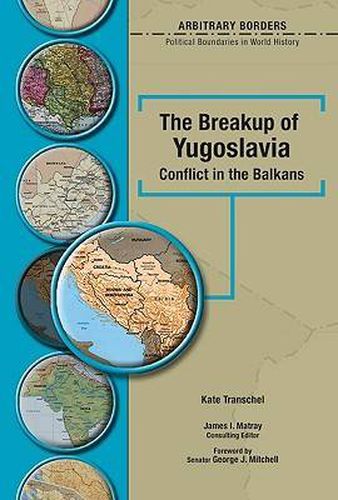Readings Newsletter
Become a Readings Member to make your shopping experience even easier.
Sign in or sign up for free!
You’re not far away from qualifying for FREE standard shipping within Australia
You’ve qualified for FREE standard shipping within Australia
The cart is loading…






The Balkan Wars of the 1990s ripped the former Federal Republic of Yugoslavia apart and resulted in war crimes and atrocities not seen in Europe since World War II. But these wars entailed more than territorial disputes - they were the result of arbitrary social, cultural, and ethnic borders that have developed over centuries. This lucid book will help students understand how the location and accessibility of the lands of the South Slavs determined Yugoslavia’s volatile history as a battleground of peoples, empires, and cultures. Historically, Yugoslav lands have been located in the
fracture zone
between East and West, Christianity and Islam, and have always been a focus of international rivalries. In the 20th century, two Yugoslavias were created and destroyed: the first from 1918 to 1941; the second from 1945 to 1991. Both Yugoslavias struggled with externally imposed borders, striving to achieve a viability that eluded them in the end. Readers will find
The Breakup of Yugoslavia: Conflict in the Balkans
an instructive example, and cautionary tale, of the centrality of arbitrary borders in the development of societies and nations in world history.
$9.00 standard shipping within Australia
FREE standard shipping within Australia for orders over $100.00
Express & International shipping calculated at checkout
The Balkan Wars of the 1990s ripped the former Federal Republic of Yugoslavia apart and resulted in war crimes and atrocities not seen in Europe since World War II. But these wars entailed more than territorial disputes - they were the result of arbitrary social, cultural, and ethnic borders that have developed over centuries. This lucid book will help students understand how the location and accessibility of the lands of the South Slavs determined Yugoslavia’s volatile history as a battleground of peoples, empires, and cultures. Historically, Yugoslav lands have been located in the
fracture zone
between East and West, Christianity and Islam, and have always been a focus of international rivalries. In the 20th century, two Yugoslavias were created and destroyed: the first from 1918 to 1941; the second from 1945 to 1991. Both Yugoslavias struggled with externally imposed borders, striving to achieve a viability that eluded them in the end. Readers will find
The Breakup of Yugoslavia: Conflict in the Balkans
an instructive example, and cautionary tale, of the centrality of arbitrary borders in the development of societies and nations in world history.